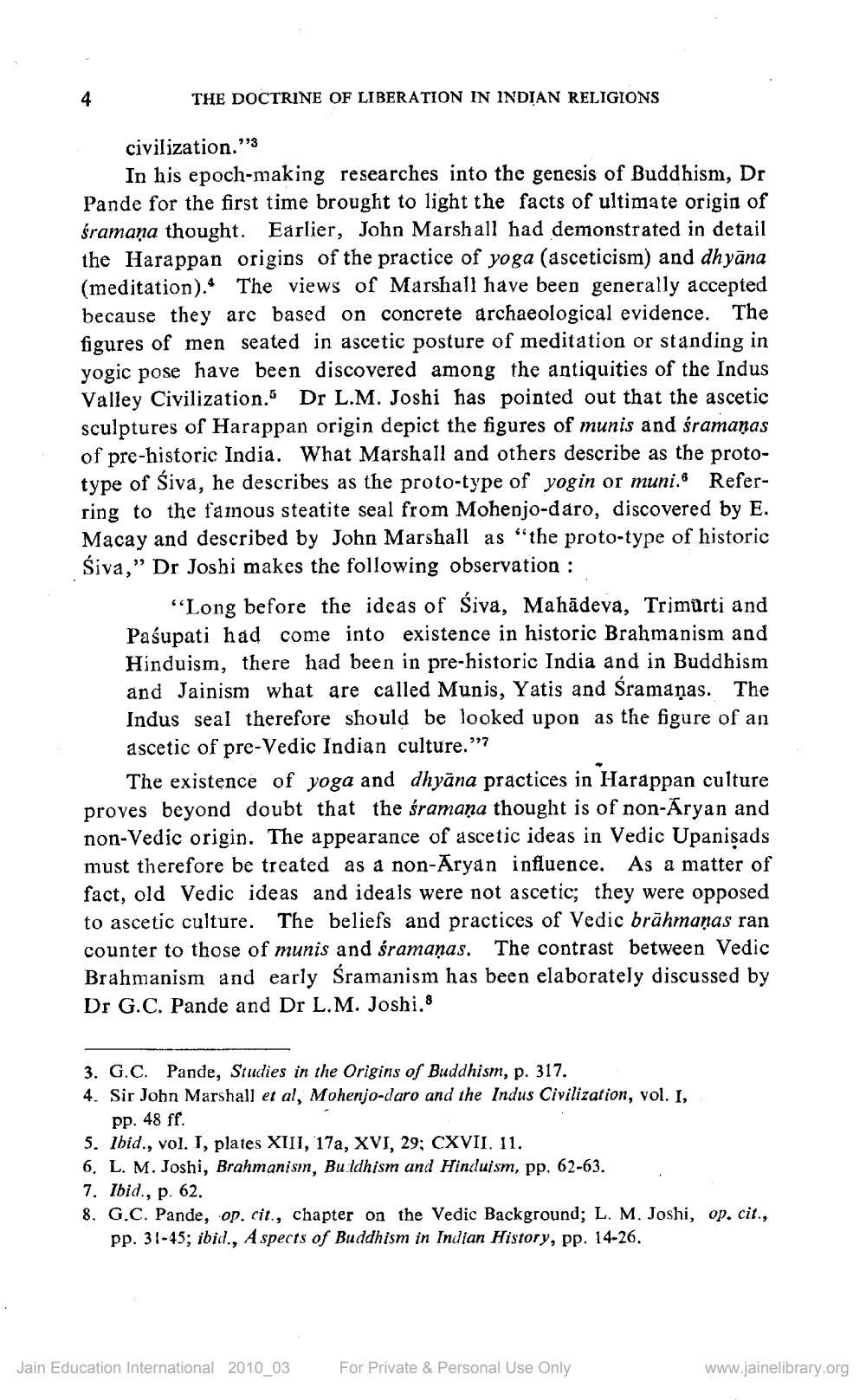________________
4
THE DOCTRINE OF LIBERATION IN INDIAN RELIGIONS
civilization."'3
In his epoch-making researches into the genesis of Buddhism, Dr Pande for the first time brought to light the facts of ultimate origin of śramana thought. Earlier, John Marshall had demonstrated in detail the Harappan origins of the practice of yoga (asceticism) and dhyāna (meditation). The views of Marshall have been generally accepted because they are based on concrete archaeological evidence. The figures of men seated in ascetic posture of meditation or standing in yogic pose have been discovered among the antiquities of the Indus Valley Civilization.5 Dr L.M. Joshi has pointed out that the ascetic sculptures of Harappan origin depict the figures of munis and śramaņas of pre-historic India. What Marshall and others describe as the prototype of Śiva, he describes as the proto-type of yogin or muni. Referring to the famous steatite seal from Mohenjo-daro, discovered by E. Macay and described by John Marshall as "the proto-type of historic Śiva," Dr Joshi makes the following observation :
"Long before the ideas of Śiva, Mahadeva, Trimurti and Pasupati had come into existence in historic Brahmanism and Hinduism, there had been in pre-historic India and in Buddhism and Jainism what are called Munis, Yatis and Śramaņas. The Indus seal therefore should be looked upon as the figure of an ascetic of pre-Vedic Indian culture."7
The existence of yoga and dhyana practices in Harappan culture proves beyond doubt that the śramana thought is of non-Aryan and non-Vedic origin. The appearance of ascetic ideas in Vedic Upanisads must therefore be treated as a non-Aryan influence. As a matter of fact, old Vedic ideas and ideals were not ascetic; they were opposed to ascetic culture. The beliefs and practices of Vedic brāhmaṇas ran counter to those of munis and śramaņas. The contrast between Vedic Brahmanism and early Śramanism has been elaborately discussed by Dr G.C. Pande and Dr L.M. Joshi.8
3. G.C. Pande, Studies in the Origins of Buddhism, p. 317.
4. Sir John Marshall et al, Mohenjo-daro and the Indus Civilization, vol. I, pp. 48 ff.
5. Ibid., vol. I, plates XIII, 17a, XVI, 29; CXVII. 11.
6. L. M. Joshi, Brahmanism, Buddhism and Hinduism, pp. 62-63.
7. Ibid., p. 62.
8. G.C. Pande, op. cit., chapter on the Vedic Background; L. M. Joshi, op. cit., pp. 31-45; ibid., Aspects of Buddhism in Indian History, pp. 14-26.
Jain Education International 2010_03 For Private & Personal Use Only
www.jainelibrary.org




